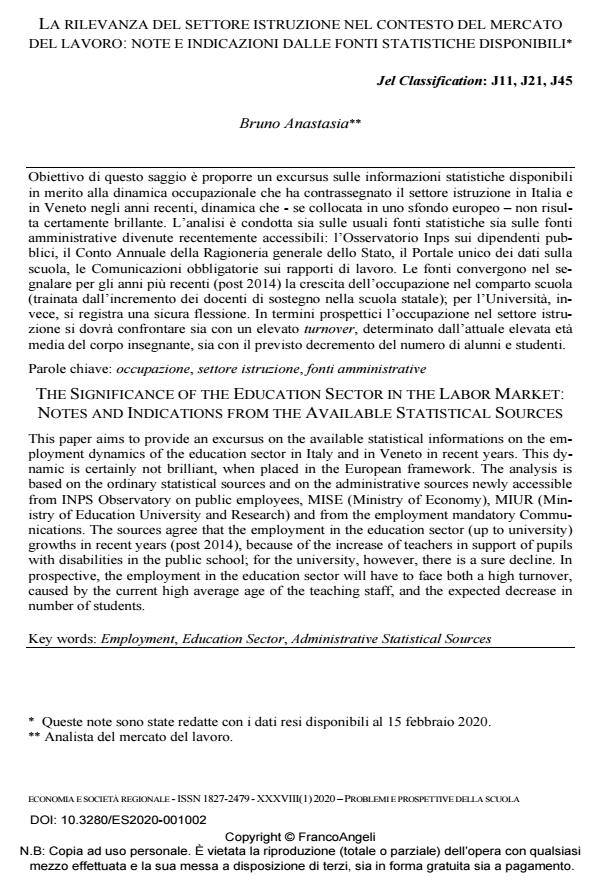La rilevanza del settore istruzione nel contesto del mercato del lavoro: note e indicazioni dalle fonti statistiche disponibili
Titolo Rivista ECONOMIA E SOCIETÀ REGIONALE
Autori/Curatori Bruno Anastasia
Anno di pubblicazione 2020 Fascicolo 2020/1
Lingua Italiano Numero pagine 28 P. 14-41 Dimensione file 480 KB
DOI 10.3280/ES2020-001002
Il DOI è il codice a barre della proprietà intellettuale: per saperne di più
clicca qui
Qui sotto puoi vedere in anteprima la prima pagina di questo articolo.
Se questo articolo ti interessa, lo puoi acquistare (e scaricare in formato pdf) seguendo le facili indicazioni per acquistare il download credit. Acquista Download Credits per scaricare questo Articolo in formato PDF

FrancoAngeli è membro della Publishers International Linking Association, Inc (PILA)associazione indipendente e non profit per facilitare (attraverso i servizi tecnologici implementati da CrossRef.org) l’accesso degli studiosi ai contenuti digitali nelle pubblicazioni professionali e scientifiche
Obiettivo di questo saggio è proporre un excursus sulle informazioni statistiche disponibili in merito alla dinamica occupazionale che ha contrassegnato il settore istruzione in Italia e in Veneto negli anni recenti, dinamica che - se collocata in uno sfondo europeo - non risulta certamente brillante. L’analisi è condotta sia sulle usuali fonti statistiche sia sulle fonti amministrative divenute recentemente accessibili: l’Osservatorio Inps sui dipendenti pubblici, il Conto Annuale della Ragioneria generale dello Stato, il Portale unico dei dati sulla scuola, le Comunicazioni obbligatorie sui rapporti di lavoro. Le fonti convergono nel segnalare per gli anni più recenti (post 2014) la crescita dell’occupazione nel comparto scuola (trainata dall’incremento dei docenti di sostegno nella scuola statale); per l’Università, invece, si registra una sicura flessione. In termini prospettici l’occupazione nel settore istruzione si dovrà confrontare sia con un elevato turnover, determinato dall’attuale elevata età media del corpo insegnante, sia con il previsto decremento del numero di alunni e studenti.
Parole chiave:Occupazione, settore istruzione, fonti amministrative
Jel codes:J11, J21, J45
Bruno Anastasia, La rilevanza del settore istruzione nel contesto del mercato del lavoro: note e indicazioni dalle fonti statistiche disponibili in "ECONOMIA E SOCIETÀ REGIONALE " 1/2020, pp 14-41, DOI: 10.3280/ES2020-001002